Behind the closed doors of San Francisco and deep within the shadowy redwoods of Northern California lies a name that draws curiosity and suspicion in equal measure: The Bohemian Club. Founded in 1872, this elusive organization—known for its mysterious annual retreats at Bohemian Grove—has long fueled the imaginations of conspiracy theorists, who claim it to be a breeding ground for world-controlling elites. But what lurks beneath the surface? Is it truly a theater of global power, or something far more mundane?
The Origins: Not Just Whispers in the Night
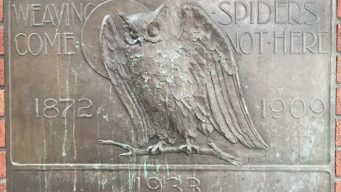
Let’s begin in San Francisco, 1872. A group of journalists, artists, and musicians came together with a single purpose: to create a refuge for those who sought solace in the arts. From these modest beginnings, the Bohemian Club was born—a cultural society where the Seven Arts reigned supreme. The members, known as “bohemians,” adopted a shared philosophy of living outside conventional society, embracing creativity, art, and intellectual freedom. Early honorary members included figures like Bret Harte and Mark Twain, men of letters who reflected the club’s literary leanings.
But as the years passed, the modest gathering grew, morphing into a highly exclusive organization that drew businessmen, politicians, and cultural titans into its fold. Why? Power attracts power, and as the arts were patronized by wealthy industrialists, so too were the creative roots of the club diluted by the influence of society’s elite. By the early 20th century, the Bohemian Club had become a gathering place not just for artists, but for men who held the reins of financial and political influence. Today, its roots still reach into its original purpose: to celebrate art and escape the weight of decision-making, far from the eyes of the world.
Its motto, drawn from Shakespeare—“Weaving Spiders, Come Not Here”—warns against bringing the business of the outside world into its hallowed spaces. But as we all know, where power gathers, so too do the whispers. The boundaries between social interaction and the casual exchange of influence blur in places like these.
The Shadow of the Arts
From its inception, the Bohemian Club has wrapped itself in the artistic traditions that birthed it. In the quiet sanctum of the San Francisco clubhouse, dramatic recitals, concerts, and exhibitions fill the halls. These events, once small gatherings, have since grown into productions of an almost mythic scale, with the club boasting impressive artistic resources: a 90-piece symphony orchestra, a 75-piece concert band, a 140-voice chorus, and an 18-piece jazz band. It is said that even the arts, in this space, must bow to the grandeur of the elite.
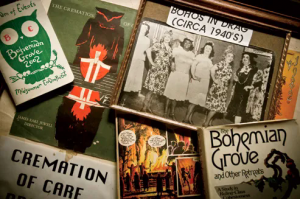
But it is Bohemian Grove that draws the most speculation. Within this 2,700-acre retreat, far from prying eyes, art is not merely appreciated—it is performed with grandeur. The Grove, purchased in 1899, stands as a testament to the club’s rise to prominence, a hidden kingdom in the redwoods. Early members such as writer William Henry Irwin described the Grove’s towering trees with reverence, speaking of the space as one would a sacred temple.
The Grove Play, an annual spectacle of original musical theater, is the pinnacle of these artistic endeavors. Casts of hundreds take the stage beneath the towering redwoods, their performances lit by the glow of something deeper than mere entertainment. These are not just plays, but performances that echo with the grandeur of secrecy, tradition, and perhaps…something more? Over 100 other performances take place during the summer retreat, each steeped in a history that stretches back over a century. Every detail—from the original music to the grandiose set designs—is meticulously crafted by the members themselves. But these artistic expressions are not just for leisure—they are the foundation upon which the club was built, a connection to its Bohemian roots.
Bohemian Grove: Sanctuary or Stage of Influence?
The Grove, nestled within the dense redwoods of Monte Rio, quickly became more than a sanctuary. It became legend. Encampments of powerful men gathered here, far from the public eye, to relax and—so the story goes—network. Could this haven of towering trees and shadows also be where the world’s great power players spin their webs? After all, it’s not every day that the U.S. presidents, titans of industry, and military leaders spend their leisure time in the same secluded campgrounds. The temptation to speculate is irresistible.
The Bohemian Club offers the perfect breeding ground for such rumors. Its insistence on privacy, its roster of elite members, and its focus on secrecy all contribute to an aura of mystery that keeps the outside world guessing. From the infamous Manhattan Project, reportedly first conceived during a conversation at Bohemian Grove, to the mingling of former and future U.S. Presidents, the potential for real-world decisions to take shape here is undeniable. The Grove provides a rare opportunity for these men to meet far from the glare of public scrutiny, and as we know, decisions made in the shadows often have far-reaching consequences.
But perhaps the greatest fuel for the fire of conspiracy is the infamous Cremation of Care ceremony.
The Cremation of Care: Ritual or Illusion?
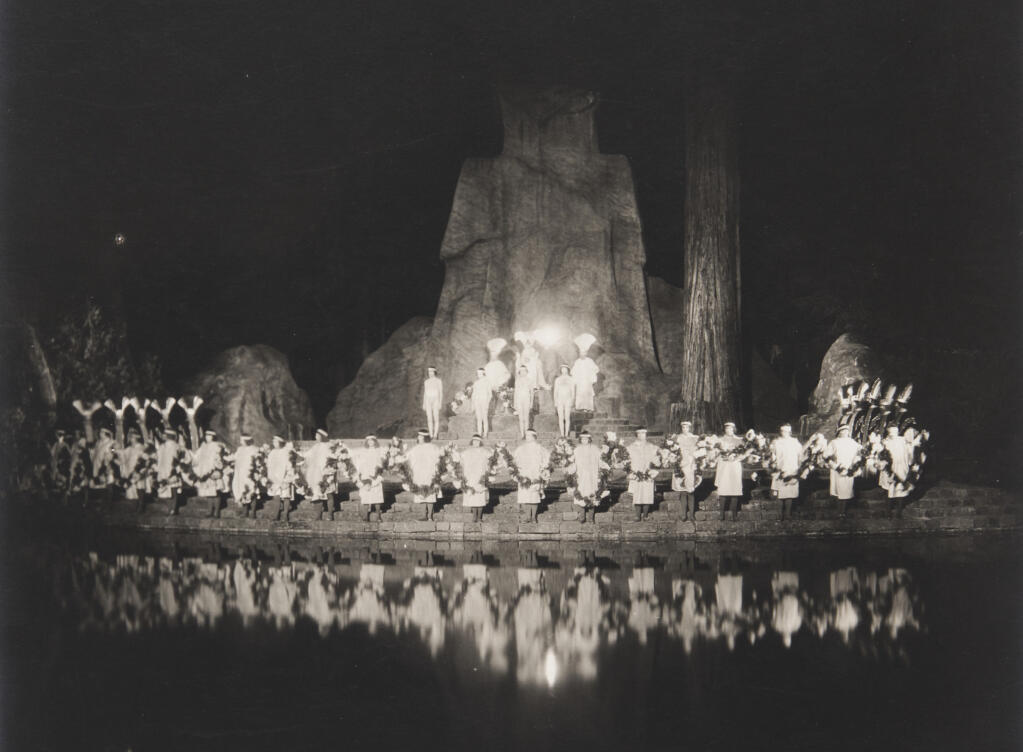
Perhaps no event at Bohemian Grove stirs more intrigue, more whispered speculation, than the infamous Cremation of Care ceremony. The name alone evokes images of dark, occult rites—shadowy figures gathered around a blazing pyre, enacting rituals unknown to the outside world. For years, conspiracy theorists have pointed to this ceremony as evidence of something sinister lurking beneath the surface. Human sacrifices, they claim. Satanic rites, others whisper. But what really happens during this most secretive of Grove traditions?
Let me set the stage. As night falls over the towering redwoods, the members of Bohemian Grove gather around an effigy—a figure representing “Dull Care,” the embodiment of their worldly anxieties. The flames flicker to life, casting long shadows among the trees as solemn music begins to play. Is this the moment when the truth of the Bohemian Club is revealed? Are these powerful men casting off more than their worries?
No. In reality, the Cremation of Care is nothing more than a theatrical production—a spectacle of sound and fire meant to symbolize the shedding of the burdens that weigh upon these influential members during the rest of the year. Written by one of the club’s founders, James T. Bowman, the ceremony is carefully orchestrated to dramatize the release of care. The effigy is burned not to invoke some dark power, but to represent the temporary banishment of stress and worry.
So why the secrecy? Why the aura of mystery that surrounds it all?
The answer, as with so much at Bohemian Grove, lies in tradition. The club’s very nature encourages privacy—men of power retreating from public life to a secluded space where they can relax and immerse themselves in art and conversation. The theatricality of the Cremation of Care fits neatly into this world of ritual and symbolism. But make no mistake: the sinister interpretations, the claims of occult worship? Those are nothing but the product of fertile imaginations.
The true purpose of the Cremation of Care is as simple as it is mundane—a momentary escape from the pressures of the outside world, wrapped in the trappings of performance.
The Unspoken Networking
Though the club insists that business dealings are forbidden—a principle enshrined in its famous motto—it would be naive to assume that no alliances are forged, no whispers shared in the twilight hours. After all, how could they not be? Presidents, CEOs, military commanders—all under one canopy of stars. Even in a space dedicated to leisure, the gravity of power is hard to resist. Conversations that begin with art and culture might well shift into policy and influence.
Membership is by invitation only, and the waitlist stretches for years. To enter this world is to join an elite brotherhood, where artists rub shoulders with politicians, and generals converse with writers. Is it a retreat from the world, or simply another stage for the powerful to conduct their affairs?
The Vault of Fiction and Fear
Bohemian Grove has captivated imaginations far beyond its physical borders. In 2000, controversial radio host Alex Jones infiltrated the Grove with his documentary Dark Secrets: Inside Bohemian Grove, stirring a fresh wave of paranoia. Though widely disputed, the images of secretive ceremonies and elite gatherings left an indelible mark on the public’s consciousness.
In fiction, Armistead Maupin’s Significant Others paints the Grove in a curious light, while the satirical Teddy Bears’ Picnic offers a mocking glance into the private world of the powerful. These works, like so many others, help to blur the lines between fact and speculation. But where the truth ends and myth begins? That remains the real mystery.
The Reality Behind the Redwoods
And so we circle back to the heart of it all: what is the Bohemian Club, really? Is it merely a private retreat for the elite to unwind, engage in artistic performances, and socialize with like-minded peers? Or does something darker lurk within the shadows of the towering redwoods? The evidence—based on years of investigation, protest, and infiltration—suggests the former. There is no credible proof of Satanic rituals or global conspiracies, only the mundane reality of wealthy men retreating from the world for a time.
But the Grove’s blend of secrecy, exclusivity, and high-profile membership ensures one thing: the legend will never die. As long as the Bohemian Club exists, so too will the whispers, the rumors, and the endless speculation of what really happens behind those towering trees.
Are they weaving their webs of power, or simply letting the world slip away for a few days each year? That, dear reader, is for you to decide.
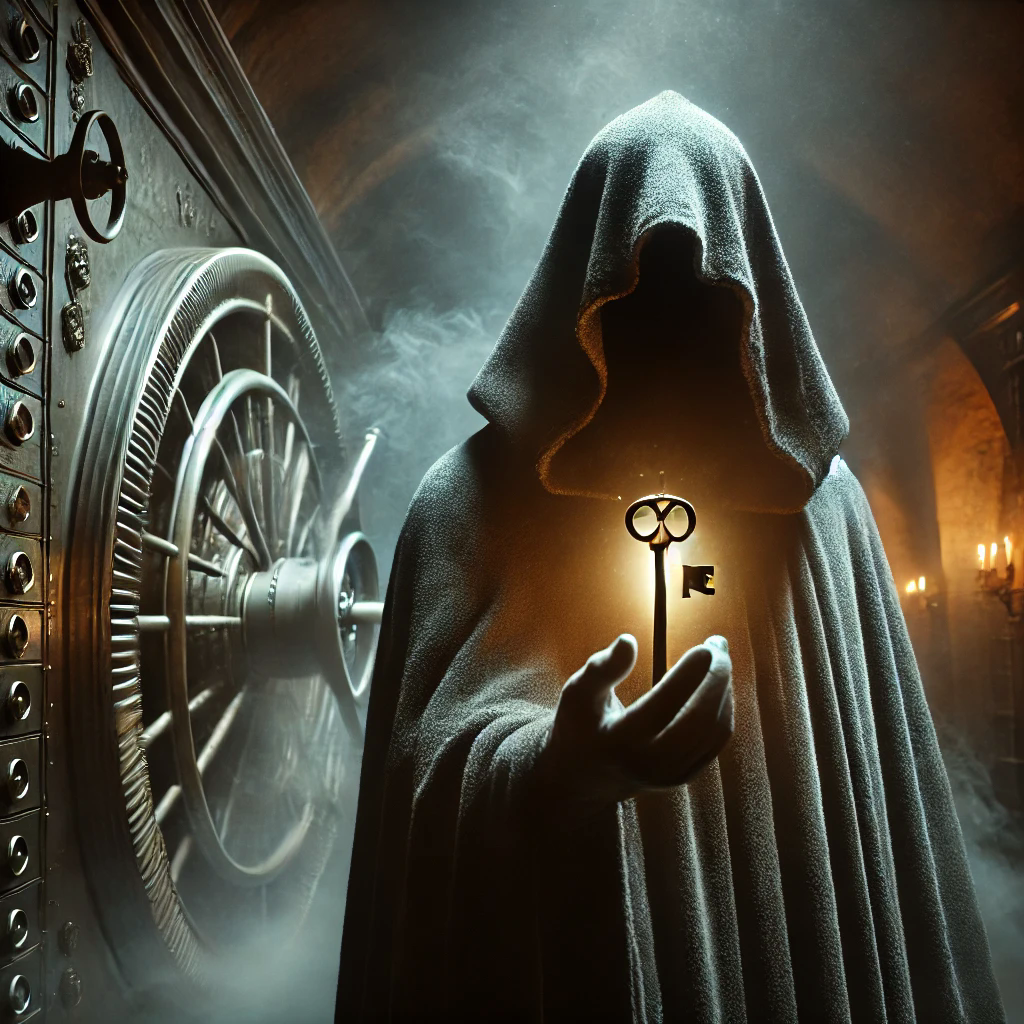
The Vault Keeper
The Vault Keeper—now there’s a mystery wrapped in a riddle, locked in a vault. Some say they’ve been around longer than most of the things they write about, quietly amassing knowledge that would make your skin crawl. Hidden behind a cloak of secrecy, they guard their vault of forgotten lore like it’s the last line between reality and madness. You won’t find friendly introductions or idle chit-chat—The Vault Keeper deals in the unexplained, always with a healthy dose of skepticism. Their work lives in the “Behind the Black Door” section, where curiosity and fear walk hand in hand. Just remember, some doors are better left closed.
Image Credits: Vanity Fair, Sonoma County Library


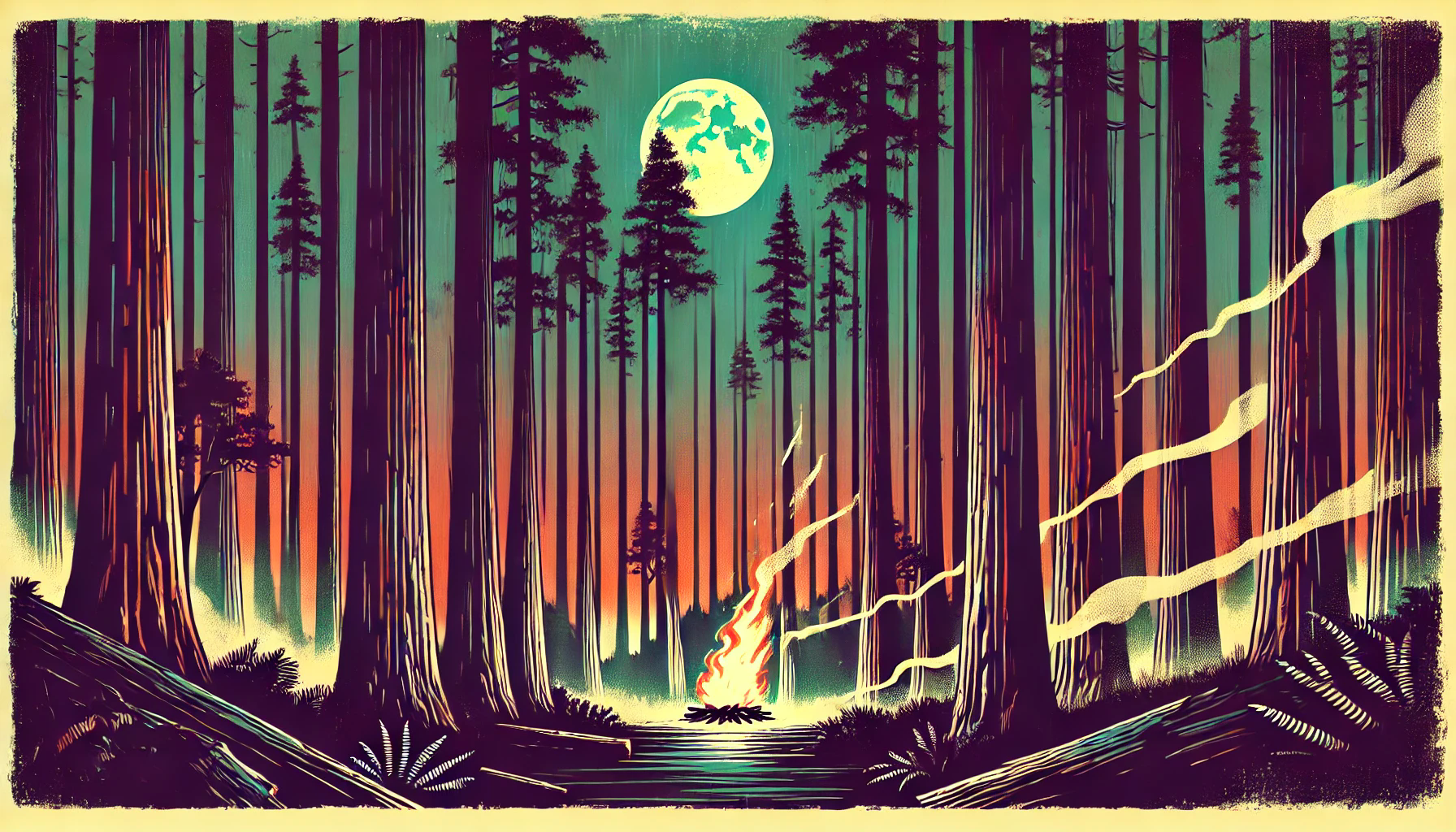
Leave a Reply